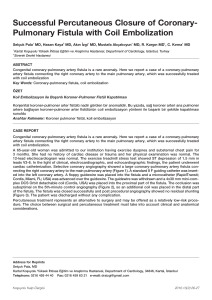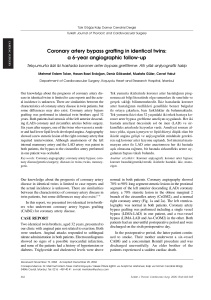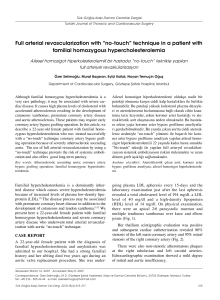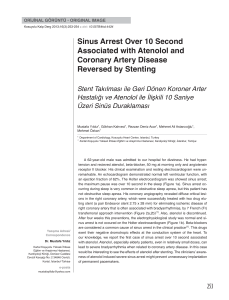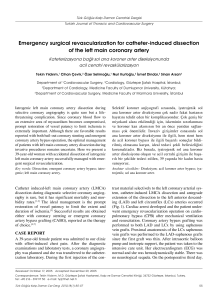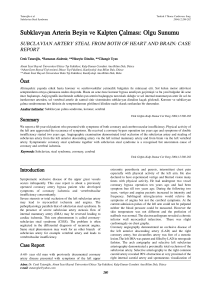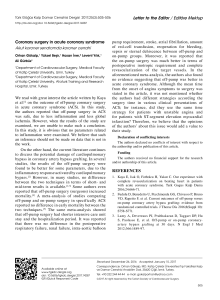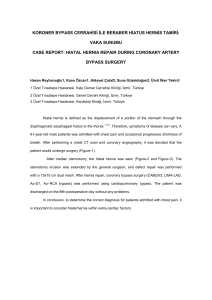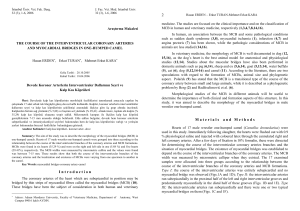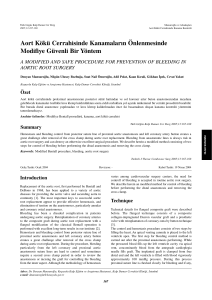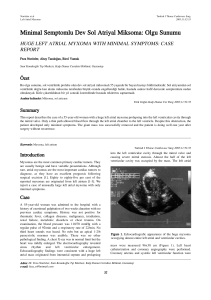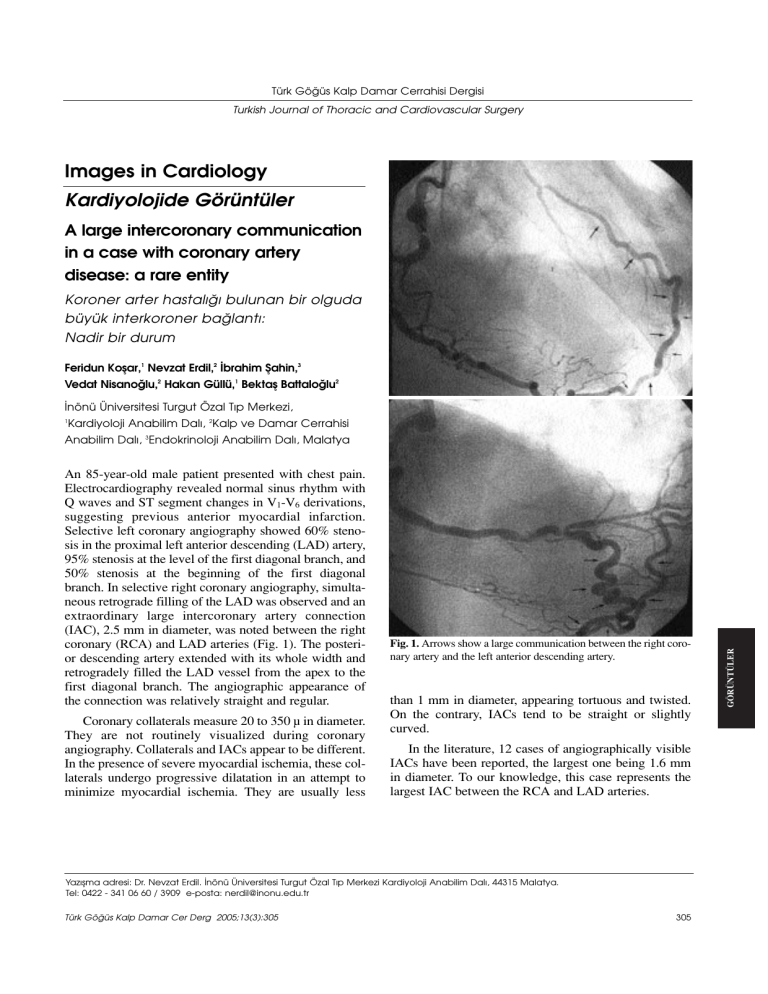
Türk Gö¤üs Kalp Damar Cerrahisi Dergisi
Turkish Journal of Thoracic and Cardiovascular Surgery
Images in Cardiology
Kardiyolojide Görüntüler
A large intercoronary communication
in a case with coronary artery
disease: a rare entity
Koroner arter hastal›¤› bulunan bir olguda
büyük interkoroner ba¤lant›:
Nadir bir durum
Feridun Koflar,1 Nevzat Erdil,2 ‹brahim fiahin,3
Vedat Nisano¤lu,2 Hakan Güllü,1 Bektafl Battalo¤lu2
‹nönü Üniversitesi Turgut Özal T›p Merkezi,
1
Kardiyoloji Anabilim Dal›, 2Kalp ve Damar Cerrahisi
An 85-year-old male patient presented with chest pain.
Electrocardiography revealed normal sinus rhythm with
Q waves and ST segment changes in V1-V6 derivations,
suggesting previous anterior myocardial infarction.
Selective left coronary angiography showed 60% stenosis in the proximal left anterior descending (LAD) artery,
95% stenosis at the level of the first diagonal branch, and
50% stenosis at the beginning of the first diagonal
branch. In selective right coronary angiography, simultaneous retrograde filling of the LAD was observed and an
extraordinary large intercoronary artery connection
(IAC), 2.5 mm in diameter, was noted between the right
coronary (RCA) and LAD arteries (Fig. 1). The posterior descending artery extended with its whole width and
retrogradely filled the LAD vessel from the apex to the
first diagonal branch. The angiographic appearance of
the connection was relatively straight and regular.
Coronary collaterals measure 20 to 350 µ in diameter.
They are not routinely visualized during coronary
angiography. Collaterals and IACs appear to be different.
In the presence of severe myocardial ischemia, these collaterals undergo progressive dilatation in an attempt to
minimize myocardial ischemia. They are usually less
Fig. 1. Arrows show a large communication between the right coronary artery and the left anterior descending artery.
than 1 mm in diameter, appearing tortuous and twisted.
On the contrary, IACs tend to be straight or slightly
curved.
In the literature, 12 cases of angiographically visible
IACs have been reported, the largest one being 1.6 mm
in diameter. To our knowledge, this case represents the
largest IAC between the RCA and LAD arteries.
Yaz›flma adresi: Dr. Nevzat Erdil. ‹nönü Üniversitesi Turgut Özal T›p Merkezi Kardiyoloji Anabilim Dal›, 44315 Malatya.
Tel: 0422 - 341 06 60 / 3909 e-posta: nerdil@inonu.edu.tr
Türk Gö¤üs Kalp Damar Cer Derg 2005;13(3):305
305
GÖRÜNTÜLER
Anabilim Dal›, 3Endokrinoloji Anabilim Dal›, Malatya

